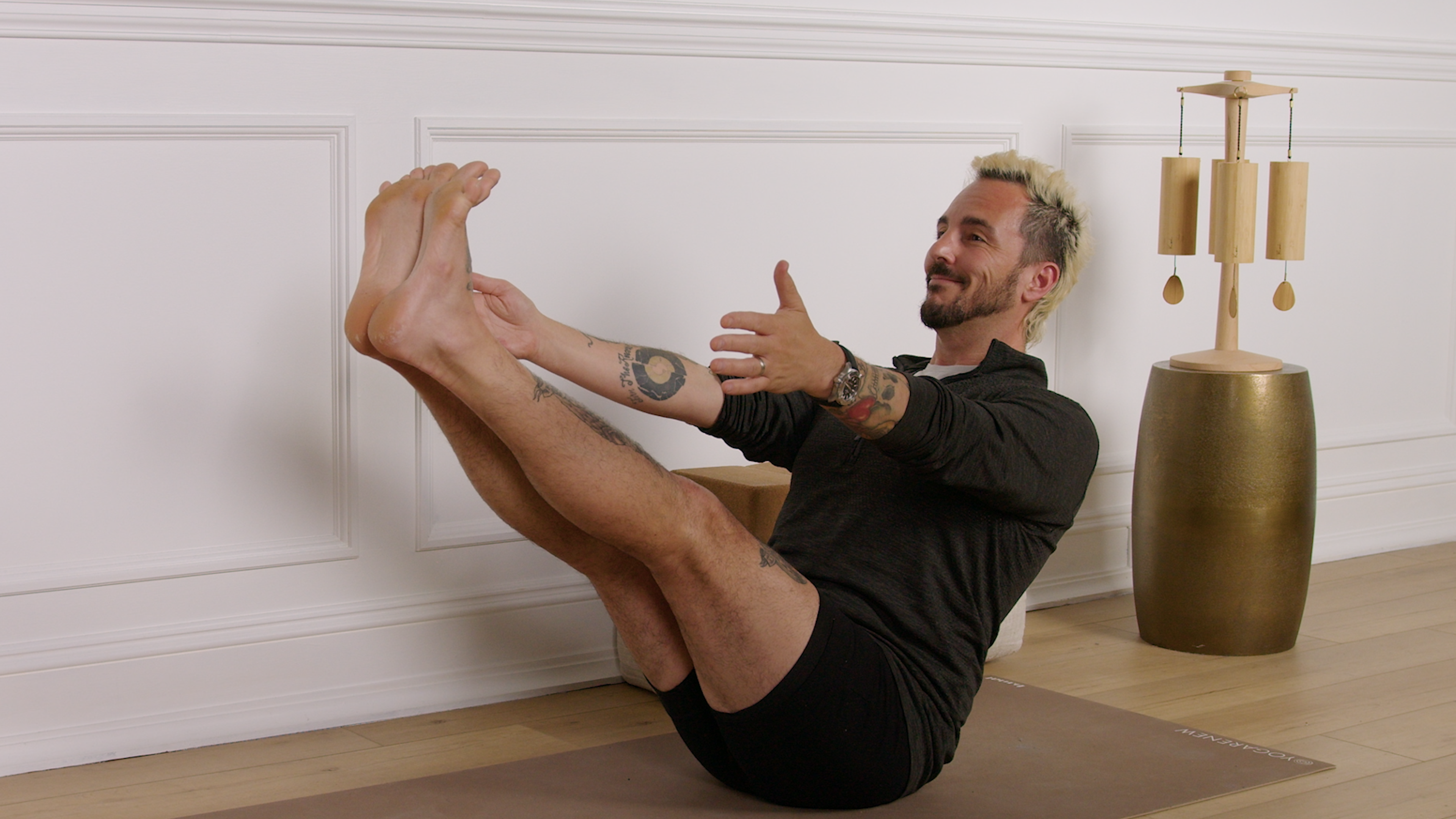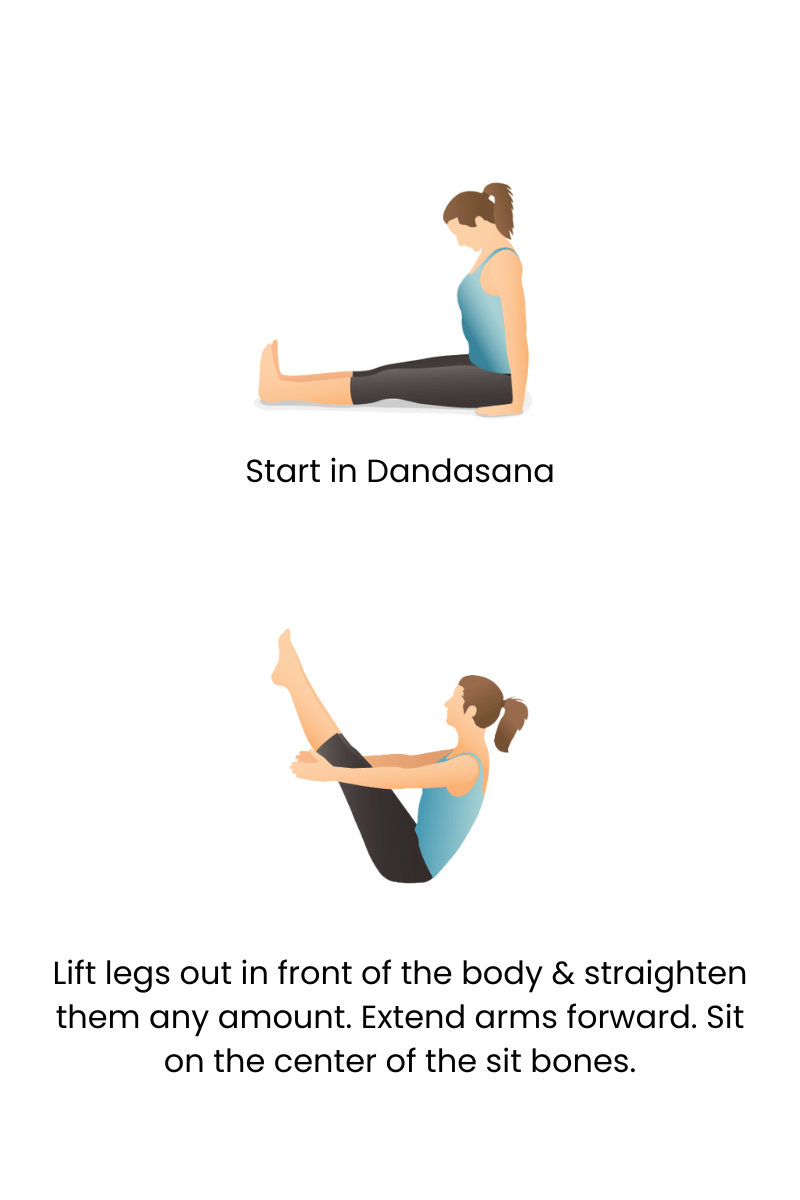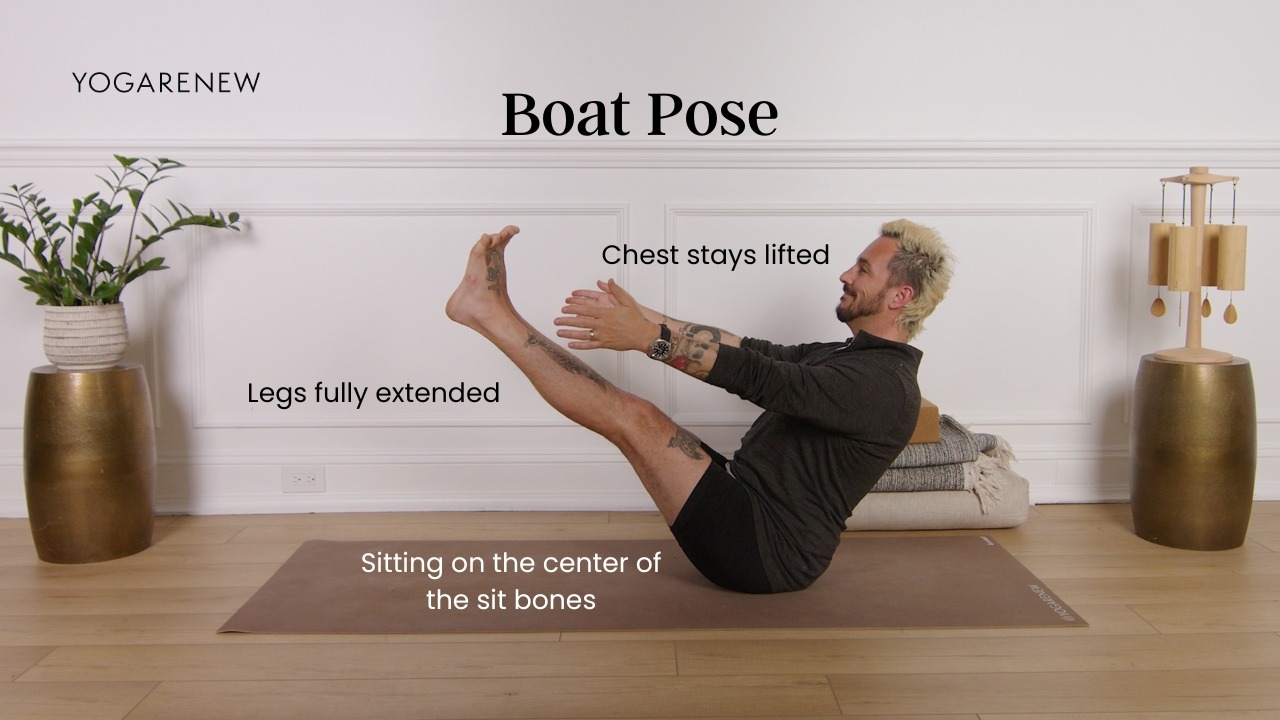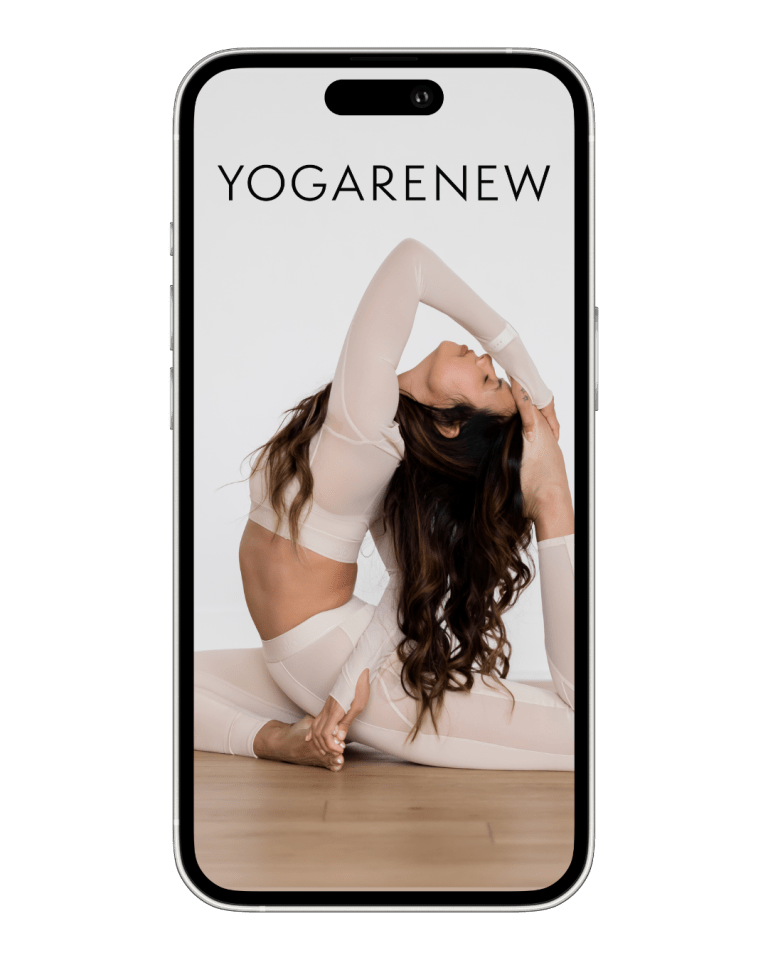What is Boat Pose?
English Name: Boat Pose
Sanskrit Name: Navasana (pronounced nah-VAH-suh-nuh)
Category: Core Strength, Seated Pose, Balance, Intermediate

English Name: Boat Pose
Sanskrit Name: Navasana (pronounced nah-VAH-suh-nuh)
Category: Core Strength, Seated Pose, Balance, Intermediate
Boat Pose, known in Sanskrit as Navasana, is a core-strengthening yoga posture that challenges stability, stamina, and focus. It’s commonly found in both beginner and intermediate sequences and is often used to build core awareness, improve posture, and develop inner strength. While the shape appears simple, holding it with control and alignment requires full-body engagement, making it a powerful pose for cultivating discipline and breath awareness.
Rooted in steadiness and concentration, Boat Pose invites practitioners to find a balance between effort and ease. By lifting the legs and chest into a “V” shape, the pose strengthens the hip flexors, abdominals, and spine while improving balance and mental clarity. Whether practiced as a stand-alone posture or in a flowing core sequence, Navasana helps students connect to their center both physically and energetically.


1. Low Back Pain or Injury: Boat Pose places pressure on the lumbar spine. Those with herniated discs, spinal compression, or lower back injuries should proceed with caution or avoid the pose entirely.
2. Hip Flexor Strain: The pose heavily engages the hip flexors. If there’s tightness or strain in the area, practitioners should modify with bent knees or supported variations.
3. Pregnancy: As the abdomen expands, Navasana may cause compression or discomfort. It’s best avoided during the second and third trimesters.
4. Hernias or Abdominal Surgery: The pose deeply activates the abdominal region. If recovering from surgery or managing a hernia, this pose should be avoided unless cleared by a doctor.
5. Heart Conditions or High Blood Pressure: The intensity of the posture can elevate heart rate and pressure. Modify or substitute with gentler core work if needed.
6. Neck Tension or Imbalance: Looking up or tensing the neck can cause strain. Keep the chin slightly tucked and gaze forward to maintain a neutral cervical spine.
Boat Pose is a powerful core-builder that strengthens your entire center, from hip flexors to deep abdominal muscles. It helps develop focus, improves balance, and builds the inner fire (agni) associated with digestion, energy, and transformation in yogic philosophy. Regular practice can enhance posture, resilience, and clarity—both on and off the mat.
Not necessarily! You can begin with bent knees and supported variations to build strength over time.
Yes—with proper modifications. Beginners should focus on maintaining alignment and using support until strength develops.
Try keeping the knees bent, sit on a folded blanket, or support your hands behind your thighs to reduce pressure.

Explore classes & pose tutorials for any style, format, duration or experience level with a free account in the YogaRenew app. Or subscribe and gain access to workshops, live classes and more.